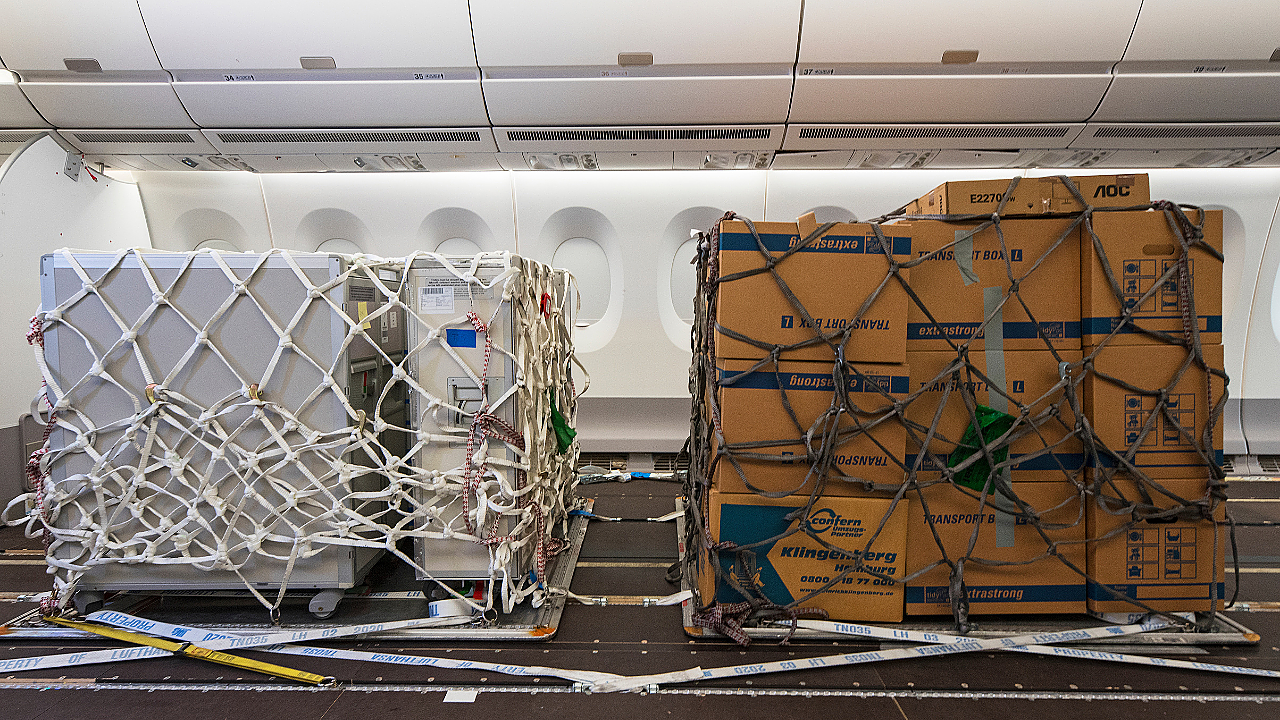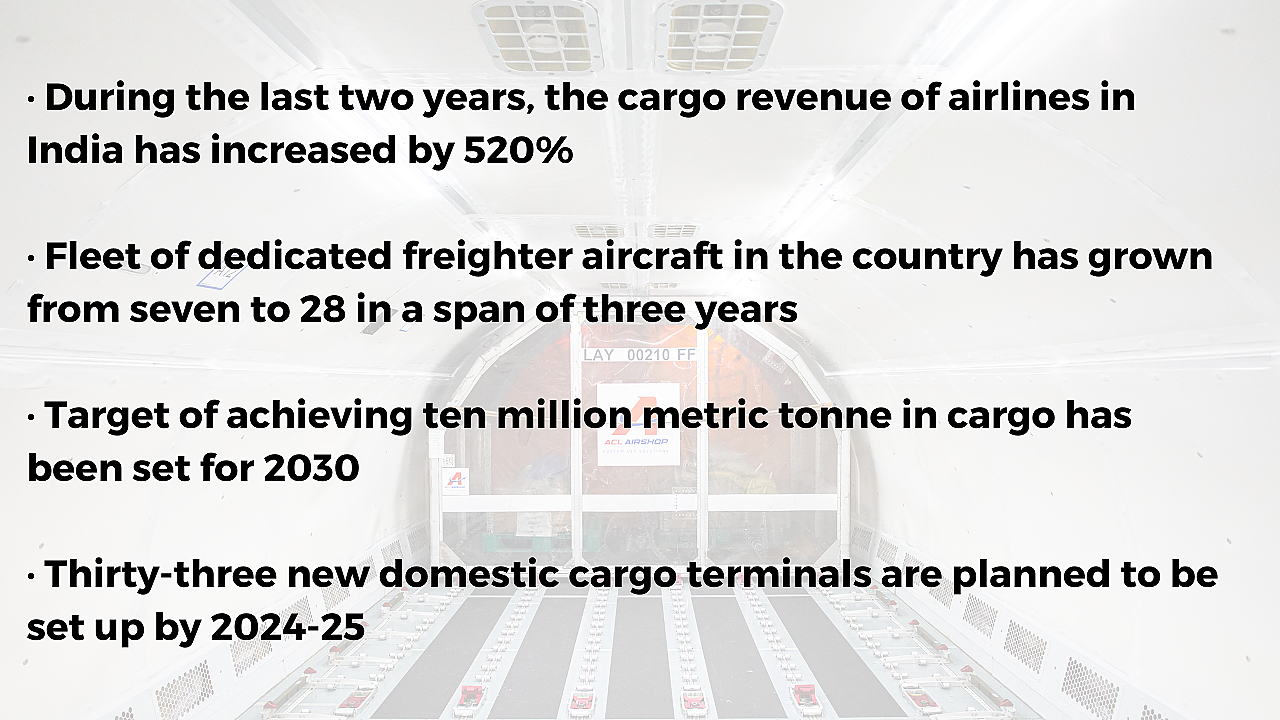
The Indian air cargo sector is poised for sustained growth, with the country increasingly emerging as a cargo hub. It is aided by a rise in Indian exports, growing trade and proximity to heavy exporting countries such as Bangladesh and Vietnam, and continued supply disruption, wherein container ships remain unavailable, and many major ports remain heavily congested.
According to information provided by the Ministry of Civil Aviation (MoCA), airlines in India have witnessed a 520% increase in cargo revenue during the last two years. In comparison, during 2013-2019, it saw 9-10% growth rate.
Positive Outlook
Dwelling on the achievements of the air cargo sector, at the annual event of Air Cargo Forum India (ACFI), Union Minister of Civil Aviation Jyotiraditya M Scindia said, “Air Cargo had started as an underdog during the difficult COVID times but the industry was able to adapt and change to the new environment. During the times of COVID, we have rapidly expanded from having seven cargo freighters to 28 cargo freighters in a short period of three years.”
The total revenue from the Indian cargo sector now stands at INR 2,000 crore, with 3.1 million metric tonnage having a 13% CAGR. Speaking at the event, which had the theme of '10 Million: Vision 2030; Stimulating, Scaling, Steering Air Cargo,' Scindia also spoke on the reforms being undertaken in the cargo sector.
“To achieve the target of 10 million metric tonne in cargo, the industry players need to focus on transportation of smaller cargo loads from Tier-II & III cities to metros which can be achieved by acquisition of smaller size aircraft. To facilitate this, we are also establishing 33 new domestic cargo terminals by 2024-2025 which will allow our cargo sector to flourish and grow,” Scindia said.
As of today, India has 21 international and 35 domestic cargo terminals. Importantly, enhancing the physical infrastructure at airports for handling cargo is also receiving greater priority. Until 2014, there were only 11 domestic air cargo terminals and 19 international air cargo terminals in India. In the years that have followed, another 27 domestic air cargo terminals were set up by Airports Authority of India (AAI) / AAI Cargo Logistics and Allied Services Company Limited (AAICLAS) in Amritsar, Madurai, Mangalore, Visakhapatnam, Chennai, Indore, Kolkata, Ahmedabad, Raipur, Aurangabad, Bhubaneswar, Varanasi, Goa, Srinagar, Ranchi, Trivandrum, Guwahati, Vijayawada, Bagdogra, Jammu, Leh, Surat, Bhopal, Dehradun, Rajahmundry, Tirupati and Hubballi. Greater efforts are also being undertaken to enhance the ease of doing business in the cargo sector, with the introduction of paperless processes, increased use of automation and digitalisation.
A staggering INR 98,000 crore is planned to be spent over four years across setting up new greenfield airports and expansion of existing brownfield airports. The AAI is to invest INR 36,000 crore and be responsible for expanding 42 brownfield airports and setting up three new greenfield airports. On the other hand, the private sector is to invest the remaining INR 62,000 crore in expanding seven existing brownfield airports and setting up three new greenfield airports, including Navi Mumbai, Jewar and Mopa.

Bullish On Demand
IndiGo anticipates a potential structural shift from traditional widebodies to narrow body cargo aircraft and will be able to take full advantage of this opportunity with the upcoming induction of the A321P2F. Speaking at IndiGo’s Q3FY22 financial results conference call in February, the airline’s CEO Ronojoy Dutta said the carrier was bullish on its cargo strategy with the induction of the four freighters and optimistic that it will become a good business.
IndiGo CarGo was to originally induct its (and India’s) first A321P2F - Passenger- to-Freighter aircraft in H1FY23. The remaining three freighters on order will be delivered by 2023. The converted freighter aircraft will be based on the A321ceo (current engine option) and be able to carry approximately 27 tonne of cargo in 24 container positions.
IndiGo’s cargo operations featured 11 aircraft from its passenger operations during the height of the pandemic, but with an increase in passenger demand, as of February, this had reduced three aircraft, with two additional aircraft being used for cabin cargo. These two aircraft have been modified with their seats removed and cargo nets installed but still limited by the size of the cargo door, which increases the time.
SpiceJet continues to be buffeted by turbulence, but its cargo operations remain a silver lining for the airline. SpiceXpress – SpiceJet’s logistics platform – reported a net profit of INR 67 crore in Q3FY22, growing 17% against the previous quarter. SpiceXpress carried more than 39,000 tonne of cargo in the same quarter. Its entire logistics business (valued at INR 2,555 crore) will be transferred to subsidiary SpiceXpress and Logistics. The cargo aircraft fleet comprises three Boeing B737-700 and two B737-800 freighter aircraft and some Q-400 turboprops. SpiceXpress commenced operations in September 2018.
Krishi Udan Scheme
The Krishi Udan Scheme was launched in August 2020 to aid Indian farmers in transporting their agricultural products for domestic and export markets. The updated scheme announced in October 2021 focussed on 25 airports in the north-eastern region, and 28 additional airports under the AAI have already been added to this scheme now. Scindia said that farmers in Tripura were now exporting jackfruit to the UK and Germany, while king chillies and lemon from Assam are now being transported to London. In FY22 (till 28 Feb), about 108,479 metric tonne of perishable cargo (international + domestic) was handled compared to 84,042 metric tonne handled in FY21 at AAI airports.
The movement of agri-produce by air transportation is being facilitated and incentivised under this scheme through a full waiver of landing, parking, terminal navigational landing charges and route navigation facility charges for Indian freighters and Passenger to Cargo at the selected airports.